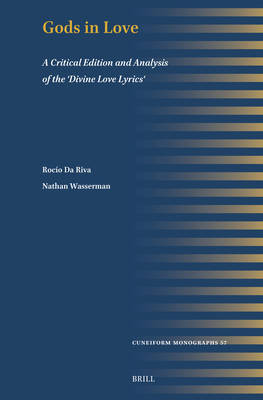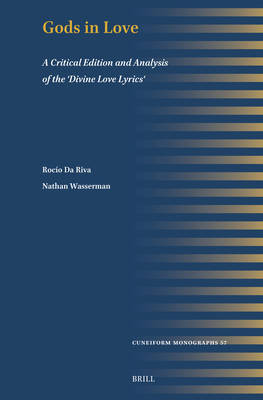
- Afhalen na 1 uur in een winkel met voorraad
- Gratis thuislevering in België vanaf € 30
- Ruim aanbod met 7 miljoen producten
- Afhalen na 1 uur in een winkel met voorraad
- Gratis thuislevering in België vanaf € 30
- Ruim aanbod met 7 miljoen producten
Zoeken
Gods in Love
A Critical Edition and Analysis of the 'Divine Love Lyrics'
Rocío Da Riva, Nathan Wasserman
€ 221,45
+ 442 punten
Omschrijving
The Divine Love Lyrics is a thematically cohesive collection of approximately 50 cuneiform texts from the 1st millennium BCE, originating in Assyria and Babylonia. These texts are connected to religious ceremonies in Babylon that revolved around the city's principal deities: Marduk, his wife Zarpanitu, and his lover, Istar of Babylon. Long recognized as a significant corpus in Assyriology, particularly through the pioneering work of W. G. Lambert, the Divine Love Lyrics have often been referenced in discussions of love, sexuality, and ritual in Mesopotamian culture. Yet, despite their importance, no comprehensive edition or detailed study of these complex and often enigmatic texts has been undertaken--until now. This book aims to fill that gap. By expanding the known corpus, clarifying its structure and themes, and providing a meticulous edition and translation of each tablet, it offers a thorough philological foundation for future research. The study deepens our understanding of this fascinating yet challenging body of texts, shedding new light on their literary, religious, and cultural significance within the later phases of ancient Mesopotamia.
Specificaties
Betrokkenen
- Auteur(s):
- Uitgeverij:
Inhoud
- Aantal bladzijden:
- 348
- Taal:
- Engels
- Reeks:
- Reeksnummer:
- nr. 57
Eigenschappen
- Productcode (EAN):
- 9789004741584
- Verschijningsdatum:
- 2/10/2025
- Uitvoering:
- Hardcover
- Formaat:
- Genaaid
- Afmetingen:
- 155 mm x 235 mm

Alleen bij Standaard Boekhandel
+ 442 punten op je klantenkaart van Standaard Boekhandel
Beoordelingen
We publiceren alleen reviews die voldoen aan de voorwaarden voor reviews. Bekijk onze voorwaarden voor reviews.











